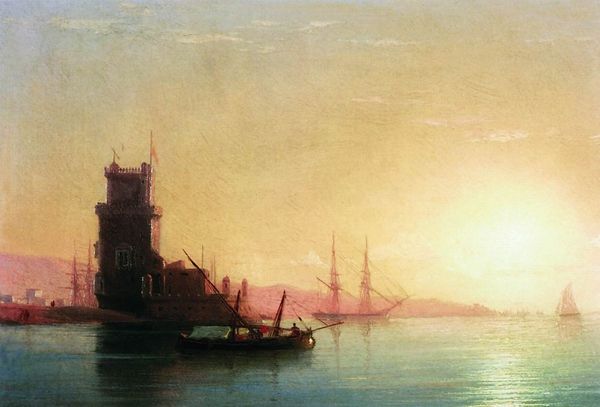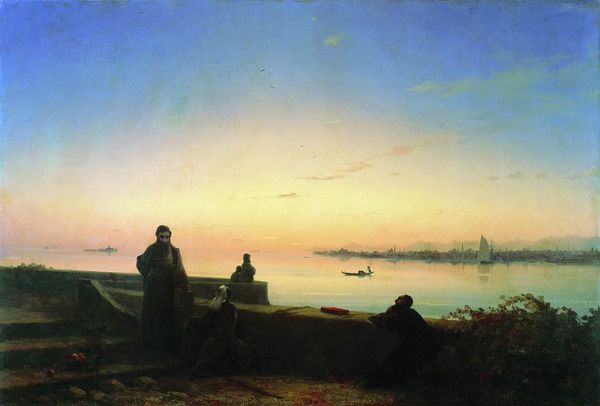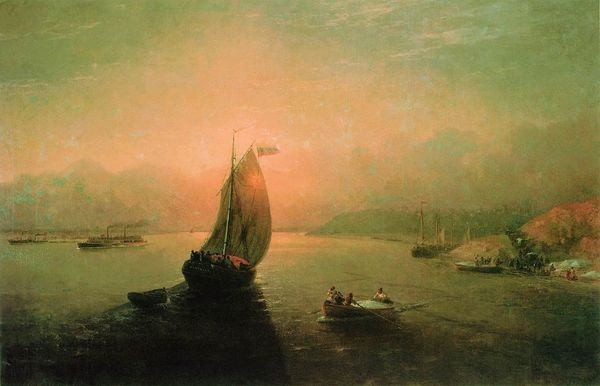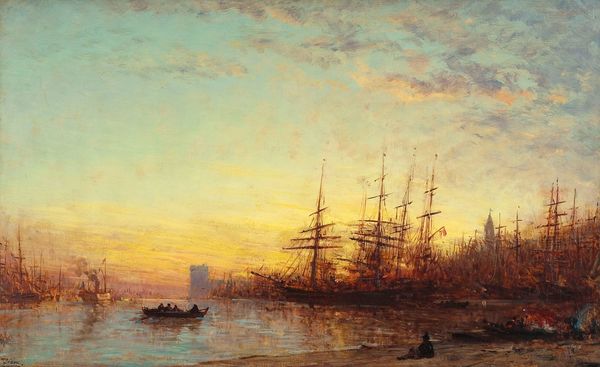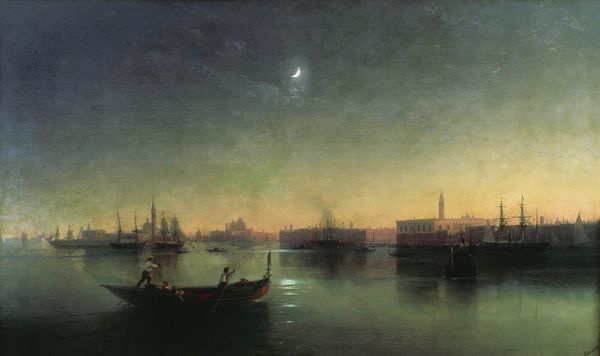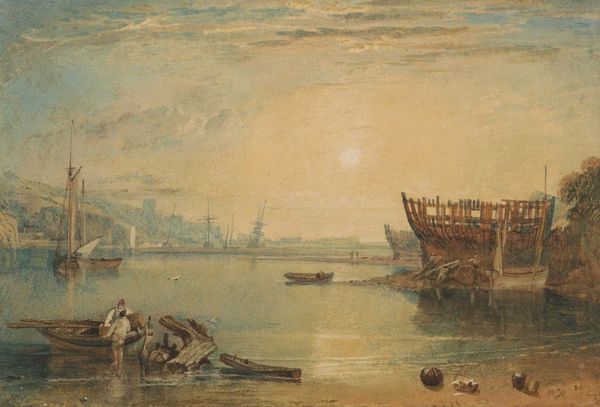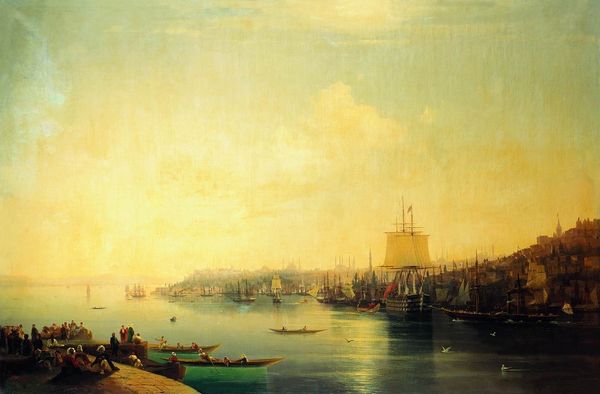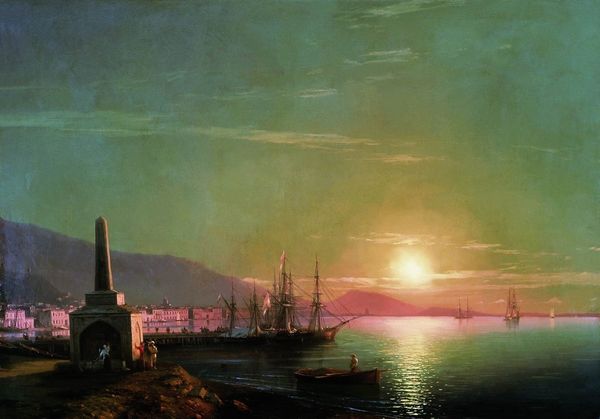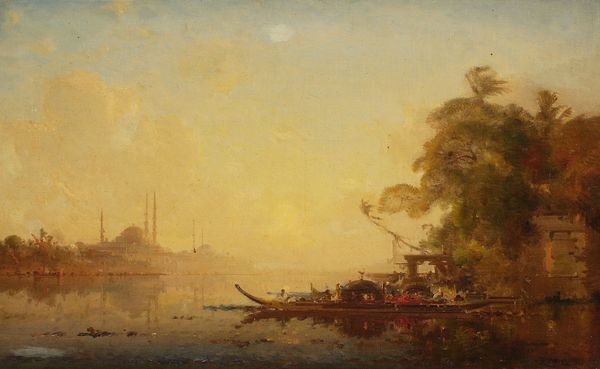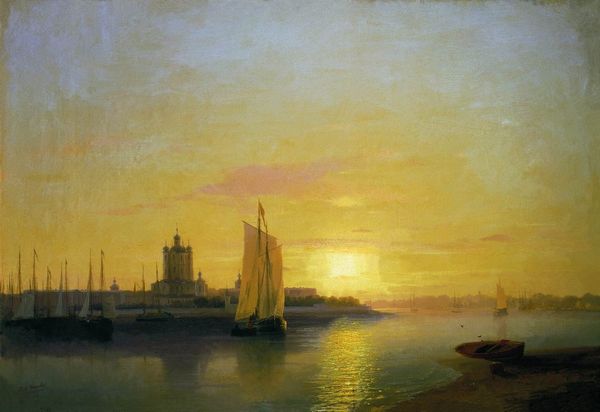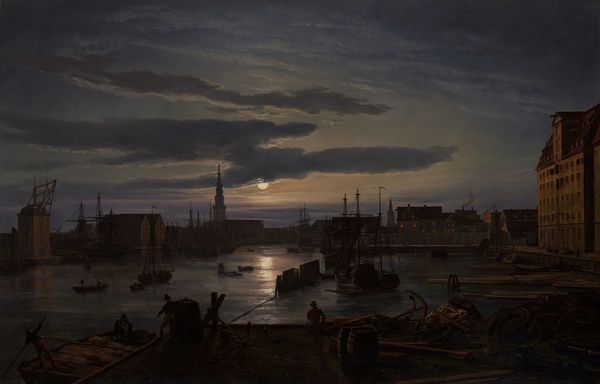
Copyright: Public domain
Curator: Looking at Aivazovsky's "View of the Bosporus," painted in 1864, what captures your eye first? Editor: The atmospheric light! It's almost otherworldly, a haze of sunset gold enveloping the city. It romanticizes what must have been a bustling, gritty port. I find it striking how that ethereal quality shapes my initial impression. Curator: Aivazovsky, celebrated for his seascapes, really plays with light here. The silhouettes of the ships and the city emphasize a certain romantic idea about the exotic East. This view reinforces Istanbul's status as a crossroads between Europe and Asia during the height of Ottoman power. Editor: Exactly. There's a deliberate framing, almost staged, to evoke that "orientalist" perspective. Note how the minarets become these elegant, almost fantasy-like, forms. But it also shows us how the Bosphorus was such a key economic and cultural waterway in the 19th Century. Curator: Beyond the staging, the symbolic weight is heavy, don't you think? Water is rarely just water in art, particularly with Aivazovsky. The water carries dreams of possibility but also the weight of history and trade. Each passing ship could signify progress or possibly looming geopolitical challenges. Editor: Absolutely. These waterways and landscapes weren’t merely aesthetic; they represented flows of capital, imperial ambition, and, in some cases, colonial conflict. What stories do the figures in the boats silently bear? Curator: Aivazovsky doesn't reveal all of them. What stays with me is the contrast between the timeless image he projects and our awareness of the rapid shifts occurring across the Bosphorus even as he painted it. Editor: It leaves me pondering the function of images – to preserve a particular memory, an agenda or simply one artist’s long-lasting impression of place? Food for thought.
Comments
No comments
Be the first to comment and join the conversation on the ultimate creative platform.
